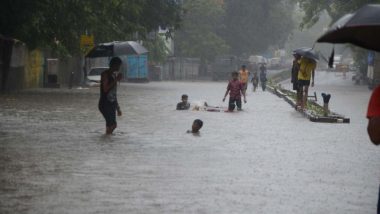India reels under floods every monsoon, especially parts of Assam, Maharashtra, Karnataka, Kerala and Uttar Pradesh. Every year, monsoon wreaks havoc in these places, prompting citizens to question how and why the governments in India have failed to prevent them over the years. The rescue teams work round the clock, lakhs of houses are evacuated, affected families are taken to the relief camps, a large section of agriculture goes under mud water and India’s home for one-horned rhinos, Kaziranga National Park suffers year on year. The situation is severe this year as well. And above all, only one question emerges—how can we save the states from floods? A huge part of the answer lies in the Netherlands’ Room for River Project. The country, which is best known for its flood control programme, provides the simplest and most effective measures to prevent such tragedies. And India must take lessons from them.
What Causes Floods?
A flood occurs when an extreme volume of water is carried by rivers, streams and other geographical features in areas where the water cannot be drained sufficiently. Again, climate change has played a significant role in causing floods at large scale across India. A rise in average global temperatures has led to a worrying trend of no rain for a longer time and then a sudden session of excessive rainfall, causing floods. Overflow of rivers, lakes and dams causes a lot of damage. Let us take an example of Brahmaputra River in Assam and Mithi River in Maharashtra, the two most flood-affected regions.
Brahmaputra River in Assam
Assam is considered to be the most flood-prone state in India. One of the reasons is that the river Brahmaputra that flows through Assam is unstable. It changes its course very frequently. In fact, environmentalists noticed that the 1950s earthquake has even worsened the situation, and the Brahmaputra River is now more unpredictable than before.
Deforestation, unplanned growth, encroachment of floodplains, climate change and embankments or walls conducted on the banks of the river are the primary reason behind floods in Assam. According to media reports, the dam in Assam is at huge risk. In 2017, it was reported that the government was planning to build a 5,000km road-cum-embankment along the Brahmaputra River to prevent the flood. But as of now, there has been no report of updates on the same.
Mithi River in Maharashtra
The Mithi River came into public awareness after the July 26, 2005 floods in Mumbai. The effect of the natural disaster was worsened by the unplanned development of the city and the destruction of natural flood control systems. Although a small river, Mithi plays a crucial role. The river now flows through residential and slum colonies in the city. Since the slums are illegal, reportedly they have never been provided with municipal facilities and the river has become a “one-stop” solution. The Mithi and its ecosystem are as neglected and exploited as ever.
How to Prevent Floods?
The Netherlands is famous for its flood control program. Their projects, adopted over the years, are evidence of a clear commitment to both adaptation and advance planning. Their vast and massive infrastructure reduced the risk of river flooding from 100 years to once in 10,000 years. You can clearly understand the seriousness. Here we will not focus on the tremendous and highly-advanced planning they have brought but their Room for the River Project. Instead of fighting with the water, the project embraces the concept of seasonal and tidal flows. In the flood-prone regions, the residents have been removed to higher ground. Here are the significant features of Room for the River Project:
1. Relocation of Dykes or Embankments
They have relocated the embankments farther from the river shore, allowing additional space within the floodplain for the river during annual floods.
2. Lower the Level of Floodplain
The floodplain bottom is lowered in depth. The increasing depth in the floodplain must occur due to the collection of sediments in the area, after years of regular flooding.
3. Reduce Height of the Groynes
The groyne is a low wall built out into the sea from a beach to check erosion and drifting. Lowering the Groynes allows for more drainage to occur during an increase in water levels more quickly.
4. Removing Obstacles
By removing the obstacles or adjusting wherever possible, the discharge of water to the sea is faster.
5. Increase the Depth of the Side Channels
Side channels are lowered in depth to increase the barrier between the river and the infrastructures.
These are a few and fundamental steps that India can attempt to adopt. Such steps will take time for the country considering the population. However, baby steps can be taken to ensure a better future. At present, the death toll in Kerala has climbed to 28, in Maharashtra it has risen to 30, and the Assam flood situation is now improving, but only after wreaking havoc in the state. The risk is high, and the rescue teams remain on duty 24*7 in all the flood-affected states. It is significant that we take preventive measures soon.
(The above story first appeared on LatestLY on Aug 09, 2019 05:52 PM IST. For more news and updates on politics, world, sports, entertainment and lifestyle, log on to our website latestly.com).













 Quickly
Quickly


